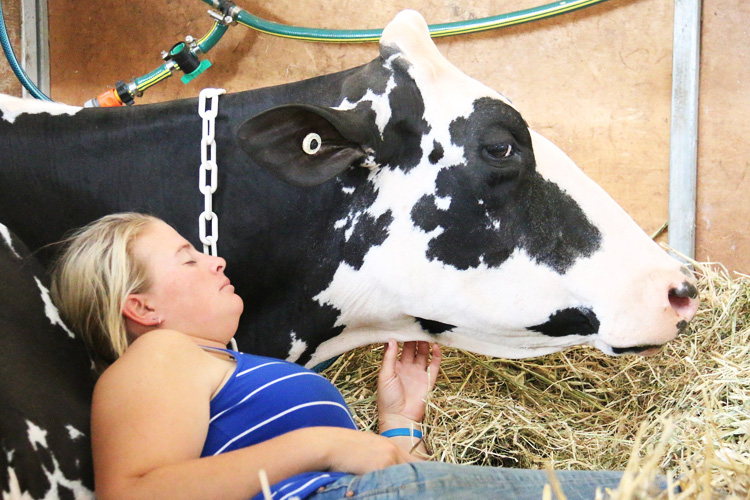Dairy Livestock
Dairy cows may be found either in herds or dairy farms where dairy farmers own, manage, care for, and collect milk from them, or on commercial farms. Herd sizes vary around the world depending on landholding culture and social structure. The United States has 9 million cows in 75,000 dairy herds, with an average herd size of 120 cows.

The number of small herds is falling rapidly with the 3,100 herds with over 500 cows producing 51% of U.S. milk in 2007. The United Kingdom dairy herd overall has nearly 1.5 million cows, with about 100 head reported on an average farm. In New Zealand, the average herd has more than 375 cows, while in Australia, there are approximately 220 cows in the average herd.
To maintain lactation, a dairy cow must be bred and produce calves. Depending on market conditions, the cow may be bred with a “dairy bull” or a “beef bull.” Female calves (heifers) with dairy breeding may be kept as replacement cows for the dairy herd. If a replacement cow turns out to be a substandard producer of milk, she then goes to market and can be slaughtered for beef. Male calves can either be used later as a breeding bull or sold and used for veal or beef. Dairy farmers usually begin breeding or artificially inseminating heifers around 13 months of age. A cow’s gestation period is approximately nine months. Newborn calves are removed from their mothers quickly, usually within three days, as the mother/calf bond intensifies over time and delayed separation can cause extreme stress on both cow and calf.
Domestic cows can live to 20 years; however, those raised for dairy rarely live that long, as the average cow is removed from the dairy herd around age four and marketed for beef. In 2014, approximately 9.5% of the cattle slaughtered in the U.S. were culled dairy cows: cows that can no longer be seen as an economic asset to the dairy farm. These animals may be sold due to reproductive problems or common diseases of milk cows such as mastitis and lameness.
Reports such as the United Nations report “Livestock’s Long Shadow” cast a pall over the livestock sector (primarily cattle, chickens, and pigs) for ’emerging as one of the top two or three most significant contributors to our most serious environmental problems.’ In April 2008, the United States Environmental Protection Agency released a major stock-taking of emissions in the United States entitled Inventory of U.S. Greenhouse Gas Emissions and Sinks: 1990-2006. It found that “In 2006, the agricultural sector was responsible for emissions of 454.1 teragrams of CO2 equivalent (Tg CO2 Eq.), or 6 percent of total U.S. greenhouse gas emissions.” By way of comparison, transportation in the US produces more than 25% of all emissions. In 2009, Worldwatch Institute released a report which revealed that 51% of greenhouse gas emissions came from the animal agriculture sector.
